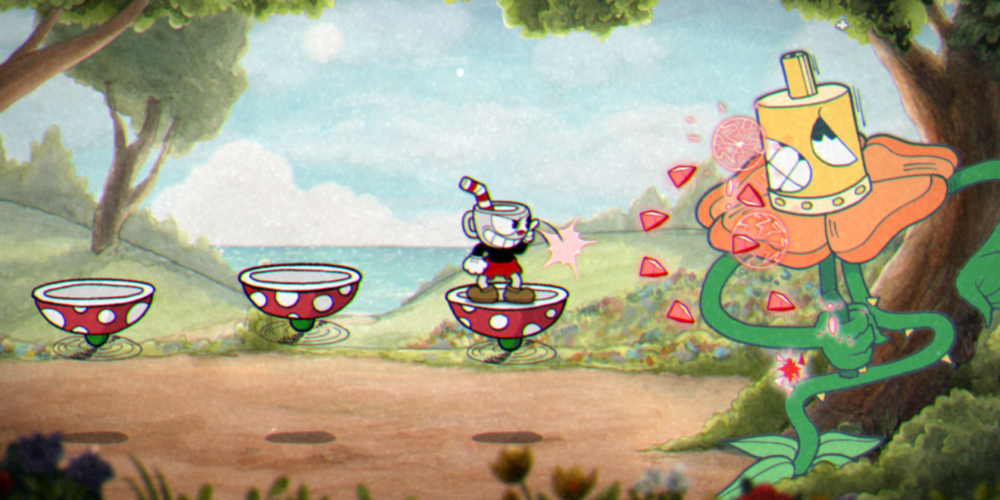The Art Behind the Code: A Deep Dive into Visual and Audio Design in Indie Gaming
- 2024-03-15 14:20

Independent video games, commonly known as indie games, have surged in popularity over the past decade, emerging as a powerful medium for innovative storytelling, artistic expression, and engaging gameplay. Unlike their big-budget counterparts, indie games thrive on creativity and ingenuity, often pushing the boundaries of conventional gaming aesthetics and soundscapes. This article embarks on an exploration of the intricate visual and audio design processes that serve as the lifeblood of the indie gaming industry, shedding light on how these elements come together to create unforgettable experiences that resonate with gamers worldwide.
The Pivotal Role of Visual Design in Indie Games
Visual design in indie games is not merely a background element, but a crucial component that shapes the player's experience, narrative immersion, and overall connection to the game. With constraints in budget and resources, indie developers are often pushed to explore artistic creativity and innovation to bring their visions to life. This section delves into various aspects of visual design within indie gaming.
Distinctive Art Styles
One of the most recognizable features of indie games is their unique and often distinctive art styles. From pixel art reminiscent of retro games to hand-drawn visuals, these styles are not only a choice of necessity but also a deliberate artistic expression by the developers. Games like "Hollow Knight" use a dark, gothic art style to accentuate the game's sprawling, mysterious world, while "Cuphead" uses a 1930s cartoon aesthetic to stand out and create a visual delight. These unique visual styles help indie games carve out their niche and captivate the player's imagination.
Using Visuals to Tell a Story
.png)
Many indie games leverage their visual design to tell compelling stories or convey emotive themes, often without the need for extensive dialogue or text. The visual narrative becomes a central storytelling technique, where every frame, color palette, and visual element is thoughtfully curated to evoke emotions, build the game's atmosphere, and deepen the player’s immersion. "Limbo" and "Inside" by Playdead are prime examples of how minimalist color schemes and visuals can create an intense, atmospheric experience that drives the narrative forward.
Challenges and Creativity in Constraints
The limitations faced by indie developers in terms of budget and resources often serve as a catalyst for creativity. With fewer assets available, the importance of each visual decision is magnified, leading to innovative approaches to design and storytelling. This constraint-driven creativity has given rise to some of the most visually stunning and creatively ambitious games in the industry, showcasing that limitation can indeed fuel innovation.
Auditory Innovation: Crafting Soundscapes in Indie Games
.png)
Equally integral to the indie gaming experience is the audio design, which encompasses music, sound effects, and voice acting. The auditory landscape of a game plays a crucial role in shaping the gaming environment, enhancing emotional depth, and aiding in storytelling. Below, we explore the components and significance of sound design in indie games.
Music: Beyond Background Noise
In indie games, music often transcends the role of mere background sound, becoming an essential narrative tool and emotional catalyst. Indie composers craft scores that reflect the game's theme, setting, and mood, creating an auditory experience that complements and enhances the visual narrative. The soundtrack of "Undertale" by Toby Fox, for instance, uses leitmotifs and thematic variations to build character depth and convey the story's emotional complexity, proving that music in indie games can be as layered and meaningful as the gameplay itself.
Sound Effects: The Subtle Art of Immersion
Sound effects in indie games are meticulously designed to immerse the gamer in the world fully. Whether it's the rustling of leaves, the clinking of swords, or the eerie silence of an abandoned space, sound effects add a layer of realism and depth to the gaming experience. Precision in sound effect placement and timing can also serve as gameplay mechanics, providing cues and enhancing the player's engagement and reaction times.
Voices and Narration: Humanizing the Digital

While not all indie games employ voice acting due to budgetary constraints, those that do often use it to great effect, adding a layer of human connection and depth to characters and storytelling. Voice acting in indie games can range from professional performances to more modest, developer-recorded lines, but in each case, the inclusion of a human voice adds immeasurably to the narrative's emotional resonance and player immersion. Games like "Firewatch" showcase how powerful voice acting can elevate storytelling, creating memorable, character-driven experiences.
Conclusion: The Symphony of Visuals and Sound in Indie Gaming
The realm of indie gaming stands as a testament to the unparalleled artistry and innovation that can arise from limitations and challenges. Visual and audio design in indie games are not merely elements of presentation but are deeply interwoven into the fabric of storytelling, gameplay, and emotional engagement. Through their distinctive art styles, inventive visuals, emotive music, immersive soundscapes, and poignant voice acting, indie games craft experiences that resonate deeply with players, leaving lasting impressions beyond the screen.
As the indie gaming industry continues to evolve, it remains a vibrant platform for artistic expression, demonstrating that with creativity, passion, and ingenuity, developers can transcend traditional boundaries of game design. Indie games remind us of the power of visual and auditory art to evoke emotions, tell stories, and create worlds that captivate and inspire. In the end, the art behind the code is a symphony of sight and sound, meticulously crafted to enrich our gaming lives with beauty, depth, and meaning.


